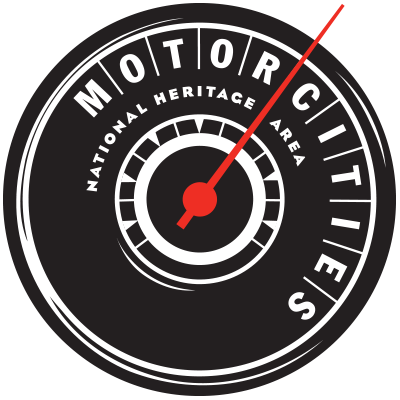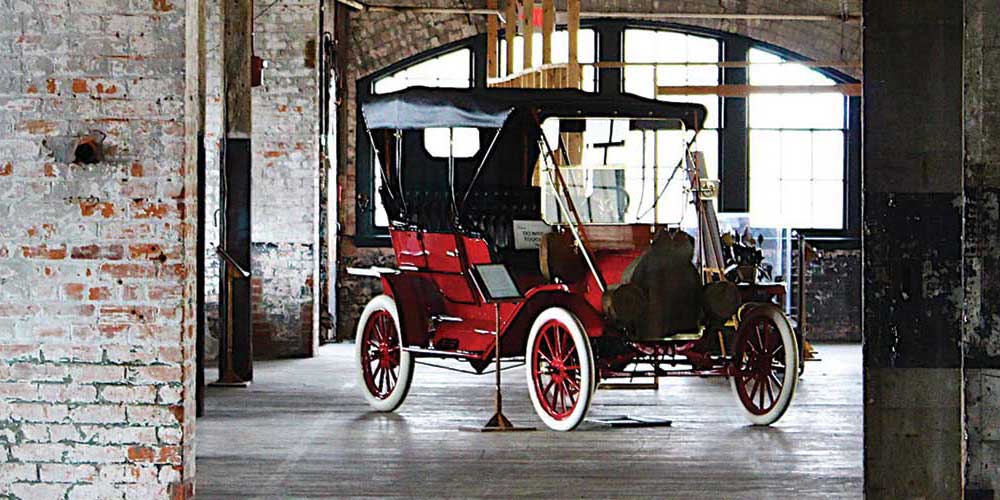by A. Wayne Ferens
Images Courtesy of the Ferens Collection
Published 2.5.2025
 A collection of competitors in the Pan-American road race (Ferens Collection)
A collection of competitors in the Pan-American road race (Ferens Collection)
After the Mexican section of the Pan-American Highway was completed in 1950, a nine-stage, six-day race across the country was organized by the Mexican government to celebrate its achievement and to attract tourism and international business. The Carrera Pan Americana road race ran for five years from 1950 to 1954 along the new highway which crossed the country from north to south for a total distance of 2,096 miles. Running on open roads, the event was similar to the Targa Florio (Sicily) and Mille Miglia run in Italy. Entries left the starting line at one-minute intervals.
Initially, the event consisted mainly of auto enthusiasts not affiliated with any vehicle manufacturer and with limited financial support. The winner of the 1950 race was American Herschel McGriff, who drove an Oldsmobile 88 that he and his partners had invested only $1,900.
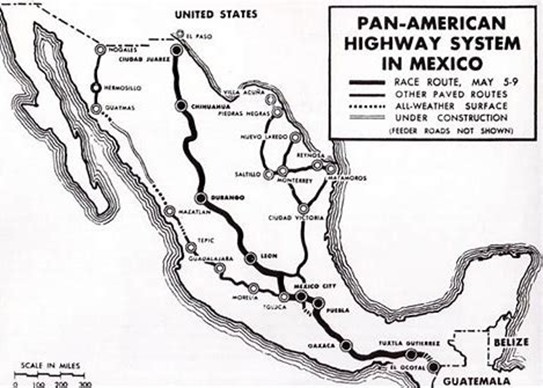 The Pan-American Race Route Map throughout Mexico
The Pan-American Race Route Map throughout Mexico
Mexico worked closely with the American Automobile Association (AAA) and other groups in the U.S. to organize and promote the event, which was limited to stock sedans; however, that was soon to change.
The first race in May 1950 attracted so much attention that the officials modified future races to encourage higher speeds and faster times. This, of course, led to the coming of team-sponsored and prepared vehicles, experienced amateur and professional drivers from America, Europe, Mexico and elsewhere. It didn't take long before organizers divided what had been a single class into Sports Car and Stock Car entries. Mercedes-Benz, Porsche, Ferrari, Alfa Romeo, Jaguar, Lancia from Europe and Ford-Lincoln-Mercury, GM, Packard, Studebaker and Chrysler were some of the manufacturers that came to compete in what would become the most dangerous race of any type in the world.
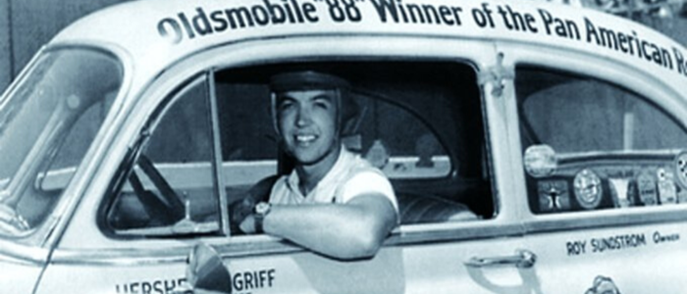 CAPTION: Herschel McGriff, winner of the 1950 competition in his 1950 Olds five-place sedan. (Ferens Collection)
CAPTION: Herschel McGriff, winner of the 1950 competition in his 1950 Olds five-place sedan. (Ferens Collection)
One of the most successful entries was the Lincoln Capri that won their class in 1952, 1953 and 1954. The "stock cars" as defined by AAA were "vehicles of which 50 had been produced, and at least another 500 were on order ... available to all authorized dealers." Cars were prepared under strict rules: Stiffer shocks and added fuel capacity were allowed. Rear seats, hub caps and fender skirts, could be removed, but air cleaners and the stock exhaust system had to remain on the cars. Fuel and oil was supplied by the race organizers.
1952 was the first year the event was divided into the two classes, “sports cars” and “stock cars.” This gave the big American cars like the Lincoln a fighting chance against the prevailing Mercedes 300s. Cars entered took a real beating as the crude Mexican roads were often hot, rocky and extremely rough, resulting in brakes, tires, suspension parts and cooling systems subject to high rates of failure. The route consisted of nine legs, and the prize money in dollars varied depending on length and road condition. McGriff, the winner in the first race in 1950, received $17,442.00 prize money.
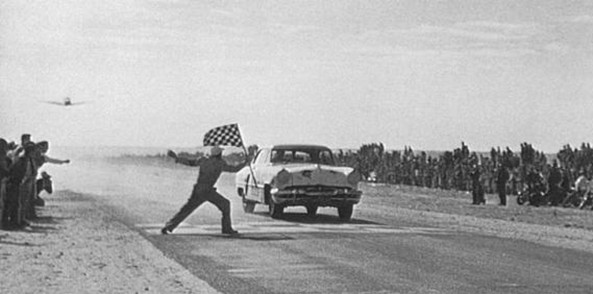 Chuck Stevenson crosses the finish line in 1952. (Ferens Collection)
Chuck Stevenson crosses the finish line in 1952. (Ferens Collection)
Chuck Stevenson crossed the finish line in his new high-compression 160 hp OHV V8 1952 Lincoln Capri taking the 1952 Stock Car class victory - his first of two consecutive victories in the event. Lincolns also finished second, third and fourth.
There was only one casualty in the 1952 event, Santos Letona, a Mexican, who died in a crash near the town of Texmelucan on the third stage between there and Mexico City. He was one of 27 people who died over the five years of the La Carrera Panamericana.
In 1953, both Sports and Stock car classes were subdivided into Large and Small groups, providing four categories in which to compete. These were split by engine capacity to accommodate the increased number of participants and diverse breeds of cars. It ran from November 19th to November 23rd.
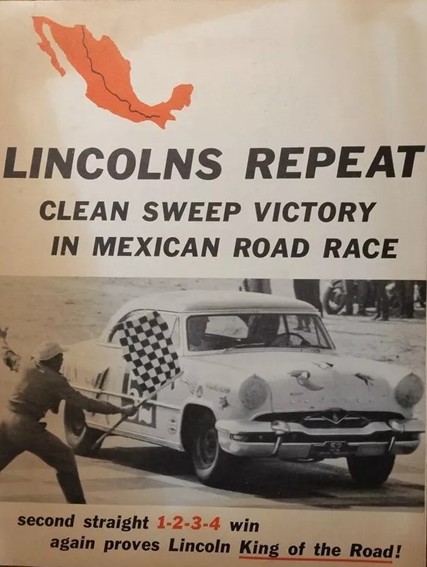 A Lincoln ad featuring their success in the race
A Lincoln ad featuring their success in the race
Lincoln came to the race in 1953 well-organized and prepared, having swept the Large Stock Cars with Chuck Stevenson of the United States. Stevenson has the distinction of being the only driver to ever win twice in the same category in the original Panamericana race. 1953 was the bloodiest year of the 1,912-mile South to North “La Carrera,”' taking the life of Lancia works driver Felice Bonetto and seven spectators, who were victims from several other accidents.
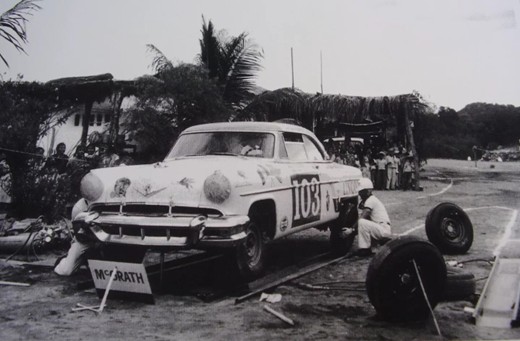 The hot asphalt in Mexico wreaked havoc on tires making changes almost routine. Lincoln again took the top four finishes. (Ferens Collection)
The hot asphalt in Mexico wreaked havoc on tires making changes almost routine. Lincoln again took the top four finishes. (Ferens Collection)
California Lincoln dealer Bob Estes’ 1953 team ran in what they called a flat-out road race like no other, with death and dismemberment more than likely. Estes’ Lincoln team finished 7th, 8th, 9th and 10th with hot rod drivers like Bill Stroppe and Clay Smith just behind the more expensive and fast cars from Europe.
The 1954 race shifted to mostly professional drivers, well-prepared cars with the best safety equipment and, of course, increased prize money -- now over a million dollars! Safety was paramount, with each state given the responsibility to protect drivers, spectators and animals. The route was shortened by 100 miles since 1951, but speeds had gone up by 50 percent. Again, the Large Stock Car class was won by the 317 cu.in., 205 hp V8 Lincoln driven by Ray Crawford, with Walt Faulkner coming in second.
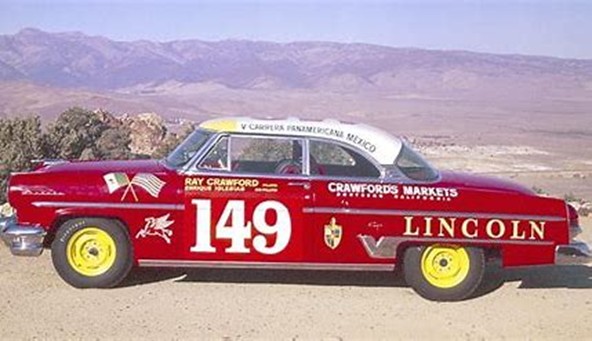 Ray Crawford, a privateer from Los Angeles, participated in all five original races won the "big stock" class in his #149 Lincoln Capri. Some 150 entrants started the race, with 85 surviving to the finish. There were two casualties in the 1954 race. (Ferens Collection)
Ray Crawford, a privateer from Los Angeles, participated in all five original races won the "big stock" class in his #149 Lincoln Capri. Some 150 entrants started the race, with 85 surviving to the finish. There were two casualties in the 1954 race. (Ferens Collection)
There is no doubt sales got a boost from Lincoln's dominance in the punishing Carrera Panamericana with sales of 14,342 Capris in 1952, rising sharply to 26,640 in 1953, and 29,552 the following year.
Due to safety concerns and the expense to the Mexican government, the race was canceled in 1955. The race saw the most famous drivers from all over the world, including Ascari, Fangio, Phil Hill, Shelby, Unser, Ginther, Maglioli, Chiron, Trevoux and yes, those that piloted the Lincoln Capris in the most dangerous road race in history.
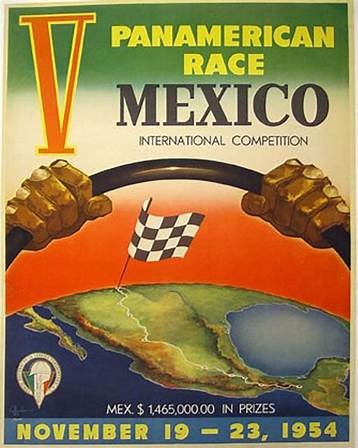 A souvenir race poster from 1954 (Ferens Collection)
A souvenir race poster from 1954 (Ferens Collection)
A final note: the race has since been resurrected along some of the original course as a classic speed rally.
Bibliography:
“The 1950 Carrera Panamericana.” Veloce Press.
Clymer, Floyd. “Mexican Road Race.” 1950.
Tipler, John. “The Carrera PanAm.” 2008.
Murphy, D.E. “Carrera PanAm.” 2008.
